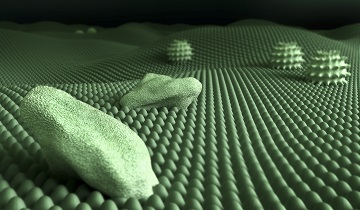Peering into nano-objects – in 3D

date: 14/04/2014
Project: Compact X-ray computed tomography system...
acronym: NANOXCT
See also: CORDIS
Contact: http://www.nanoxct.eu/
The EU-funded NanoXCT project devised a breakthrough solution. It overcomes the limitations of conventional imaging techniques, using X-ray computer tomography (XCT). Nano-XCT is like the similarly named medical technique for viewing inside the body, except it works at nano-scales. A nanometre (nm) is one billionth of a metre. Far smaller than the wavelengths of visible light, this is the realm of atoms and molecules.
The project aimed to develop a compact and affordable scanner, providing three-dimensional interior views of samples with sizes smaller than 1 mm. Such a scanner could for example clearly resolve structures on a silicon chip.
The NanoXCT system uses X-rays to penetrate a specimen – for example a microchip. The X-rays enter the object or material from one side and exit the other. A digital detector records an 'attenuation' image. The sample is turned in stages and re-imaged throughout a full 360° turn. A computer then combines all 2D attenuation images into a single 3D X-ray image.
The scanner is also capable of analysing chemical composition. It does this via spectral analysis of the specimen, meaning it determines the elemental decomposition of the materials present. The project is also developing the software necessary to run the scanner, combine the images, and perform the spectral and spatial data analysis.
Opening doors in materials research
The prime benefit of the system is that it aids materials research. "A lot of university laboratories would love to have a conveniently sized nanoscale XCT scanner," says project coordinator Dr Christoph Heinzl, of the University of Applied Sciences Upper Austria.
Once the project's device reaches its target market, it should influence the creation of new materials. The NanoXCT device will also eventually aid other research fields, including nano-electronics, and possibly biological and biomedical applications.
However, making such a system is not simple, and the project had to overcome considerable technical difficulty. "In order to develop such a device," says Heinzl, "you have to develop each component well beyond the state of the art." The X-ray source needs to be ultra-bright, and focused at a tiny spot. This helps achieve the magnification required for the project's goals. "However," Heinzl continues, "in terms of technological issues, ultra-bright and nano-focus are contradictory, so it's really an issue to get this into place."
The detector must also have a wide field of view. Perhaps most tricky, the motion of the manipulation system must be extremely precise, otherwise the tiniest unplanned movement would cause blurring in the data genetrated.
The next step for the project will be to further develop component technologies and clear the remaining technical hurdles. The team is on-schedule to begin test scans towards the project's end in 2015.
Then the project will commercialise the complete device to a worldwide market worth around € 420 billion, which also shows steady double-digit annual growth. "It is fair to say that the market is going to be very interested in the NanoXCT device," says Heinzl.
